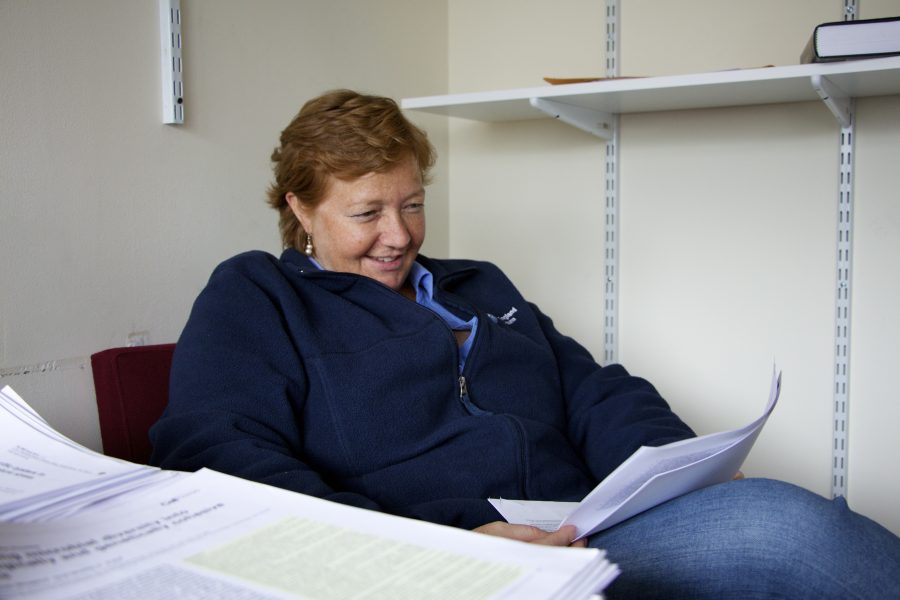A research team consisting of University of Massachusetts Boston professors, undergraduate and graduate students are working to decipher the way microbes develop in oyster estuaries, in the wake of recent illnesses caused by Vibrio Parahaemolyticus (VP) microbes.
UMass Boston Professor of Biology, Jennifer Bowen, and her team, which includes research faculty members and the New England Aquarium’s Michael Tlusty, are trying to better understand the microbes that live within the sediment of beds where the oysters are farmed.
All oysters have vibrio, but too much of it can be a problem. If someone is infected with VP, after 24 hours the individual experiences explosive, watery diarrhea accompanied by nausea, vomiting, abdominal cramps, and sometimes fever. These infections usually occur between the months of May and October when the conditions for VP are ideal.
The researchers are determining how these vibrio communities are shaped, and what kind of microbes are actively growing and under what conditions. Specifically, they seek to find if there is something in the methods the farmers use to grow the oysters which is effecting conditions that produce “good” or “bad” bacteria.
If the oyster beds are stable, healthy communities, then harmless bacteria breeds. The opposite occurs if the communities are unstable. To determine this, the researchers must look at oyster farming practices. If currents change or something similar causes a suspension or scattering of sediment in the beds, oysters can be infected.
There is no good way to test for vibrio before people get sick. The usual method is to shutdown the estuaries and basically wait for the oysters to eventually clean the VP from their systems naturally. Alternatively, because VP is temperature sensitive, farmers can also simply wait for the temperature to drop for VP to be cleaned out.
Unfortunately, without having a way to screen for VP the farmers can’t find out that their beds are infected until at least three weeks after the initial illness.
The research occurring at the laboratories in the McCormack building hopes to better understand the outbreaks when they happen. Due to the delay the information on the environment once the farmers find out is usually unrelated to the outbreak.
“[The] first step is being able to come up with a way to preserve samples so that if an outbreak happens, we can go back and [ask] what was happening at that time right before the outbreak occurred,” stated Bowen.
Then the researchers have an inventory of samples from farming systems that are prone to outbreaks, instead of wasting resources collecting samples while waiting for an outbreak to happen. The water and mud from the beds are frozen to provide information for the future.
The research is done at UMass Boston at the McCormack building in both Micheal and Bowen’s laboratories. They do not have live vibrio at the labs yet, but in the future they hope to have the chance.
Sarah Fineman, a graduate student at UMass Boston, collects samples for the preservation work. Her samples are collected from Island Creek Oyster Company in Duxbury, Watch Hill Oyster Company in Rhode Island, and several independent companies in Wellfleet.
In addition, Yvetane Moreau, an undergraduate at UMass Boston and a member of the Initiative for Maximizing Student Development program here at UMB, is researching preservation of the oysters as well. The IMSD program is designed to facilitate the success of underrepresented students who wish to go into research careers. Both students work with both Professor Bowen and Micheal Tlusty on this project.

